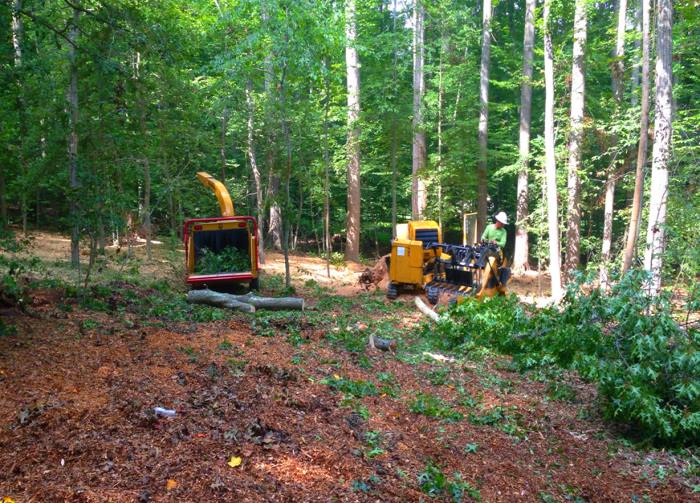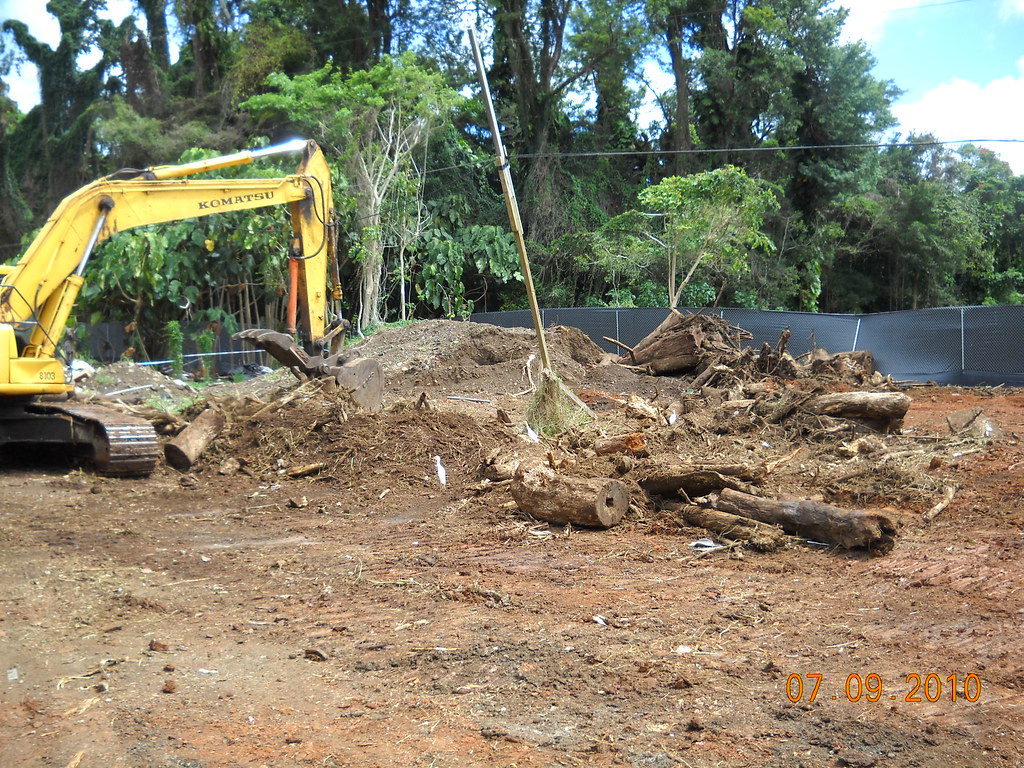Ground Clearing Servicesin Almont MI
Ground Clearing Solutions for Efficient Land Preparation
We Are Locally Owned & Operated For Over 37 Years
Contact Us Today!
We Serve Businesses In And Around The Following Cities:
About Ground Clearing Services
An Introduction to Ground Clearing in Almont: Necessity and Practicality
The development of Almont’s commercial properties has experienced an upsurge in recent years, bringing to the forefront the importance of ground clearing services – an integral aspect of preparing lands for construction and remodeling. As the city expands and its skyline rises, more and more businesses are seeking efficient solutions to clear the land and prepare it for new structures. Let’s delve deeper to understand the process, benefits, and real-world applications of commercial property clearing in Almont.
Understanding the Basic Process of Ground Clearing
The process of ground clearing is a fundamental aspect of the preparatory phase in commercial construction. It includes clearing and grading land, removing trees, leveling, and even yard clearing services in some instances. Despite the complexity of the task, especially on heavily wooded or overgrown sites, skilled clearing contractors are capable of efficiently setting the stage for development projects.
A reputable organization like D&J Contracting stands out in the Almont locale due to their mastery of ground clearing operations. They are equipped with cutting-edge clearing tools and equipment such as skid steers, which are particularly effective in clearing trees and overburden from lands.
The Critical Benefits of Professional Ground Clearing
The benefits of employing professional clearing services for commercial properties are multifaceted. First and foremost, safety is secured as potential hazards concealed beneath vegetation like stumps, rocks, or hazardous materials are identified and eliminated. With a clearing company by your side, they can also ensure the land is free of underground utilities that may pose a threat during the excavation phase.
Professional ground clearing also aids in preventing soil erosion, mitigating the risk of ecological damage. Not to mention, a well-cleaned plot of land is a key factor in our perception of the property’s initial value, enhancing its aesthetic appeal.
Real-world Applications of Ground Clearing
The versatility of ground clearing services is evident in its wide array of applications. For example, consider property owners intending to revamp an old, unused segment of their land to accommodate a new commercial building. Here, a clearing company like D&J Contracting can step in, relieving the property owner of the daunting task of manually clearing the overgrown bushes and trees. Their expertise could also be applied to commercial housing developers clearing wooded land for house construction.
In another scenario, a retail business might own a patch of land littered with debris and obsolete structures. By employing a viable solution such as property clearing services, they can have the area cleaned and graded, making it suitable for new infrastructural developments – be it a state-of-the-art shopping mall, restaurant, or office space.
The prevalence of lot clearing companies and contractors in Almont mirrors the demand for such services. Be it clearing and grading land for agriculture, housing, industrial, or commercial structures, the importance of professional ground clearing services cannot be overstated.
Conclusion: The Indispensable Role of Ground Clearing in Almont
In conclusion, ground clearing plays a critical role in preparing the canvas on which Almont’s future commercial spaces will be crafted. Its value in ensuring safety, preventing ecological damage, and enhancing aesthetic appeal transforms it into a vital part of the pre-construction phase. Moreover, real-world applications demonstrate the breadth of its function in the commercial sector.
As Almont continues to thrive and develop, partnering with a trusted company like D&J Contracting can be a strategic move for any commercial property owner. Blending industry experience, a comprehensive suite of clearing services, and a local understanding of Almont’s landscape and needs, they are more than capable of facilitating your ground clearing endeavors. The city’s potential is vast – unlock yours by starting on a cleared, secure foundation.
Ground Clearing Services Gallery


Call Us Today to receive your Free Quote for
Ground Clearing in Almont
Serving: Almont, Michigan

About Almont, Michigan
Almont was first settled in 1828 by James Deneen. It received a post office in 1835 named Bristol, for Oliver Bristol, the second permanent settler. The village was platted as Newburg in 1836, and renamed Almont in 1846.
According to HildaMae Bowman’s “Almont, The Tale of Then and Now,” Almont’s name was changed in 1845 to honor the Mexican general, Juan Almonte.
According to the United States Census Bureau, the village has a total area of 1.42 square miles (3.68 km), all land. The village center of Almont is located at the intersection of M-53 (also known as Van Dyke) and St. Clair Street. To the east, St. Clair is known as Almont Road, and to the west it is known as General Squire Road. In addition, this is also sometimes deemed as “40 Mile Road”, although the nearby ascending “mile roads” officially end at “37 Mile Road”. Nearby towns include Bruce Township and Romeo to the south; Dryden to the northwest; Imlay City to the north; and Allenton to the east, and Capac to the northeast. Almont is approximately 40 miles (64 km) north of Detroit.
| Census | Pop. | Note | %± |
|---|---|---|---|
| 1880 | 837 | — | |
| 1890 | 717 | −14.3% | |
| 1900 | 718 | 0.1% | |
| 1910 | 675 | −6.0% | |
| 1920 | 789 | 16.9% | |
| 1930 | 844 | 7.0% | |
| 1940 | 924 | 9.5% | |
| 1950 | 1,035 | 12.0% | |
| 1960 | 1,279 | 23.6% | |
| 1970 | 1,634 | 27.8% | |
| 1980 | 1,857 | 13.6% | |
| 1990 | 2,354 | 26.8% | |
| 2000 | 2,803 | 19.1% | |
| 2010 | 2,674 | −4.6% | |
| 2020 | 2,846 | 6.4% | |
| U.S. Decennial Census | |||
As of the census of 2010, there were 2,674 people, 1,030 households, and 728 families living in the village. The population density was 1,883.1 inhabitants per square mile (727.1/km). There were 1,116 housing units at an average density of 785.9 per square mile (303.4/km). The racial makeup of the village was 93.1% White, 0.3% African American, 0.3% Native American, 0.2% Asian, 4.9% from other races, and 1.1% from two or more races. Hispanic or Latino of any race were 7.4% of the population.
There were 1,030 households, of which 37.3% had children under the age of 18 living with them, 50.6% were married couples living together, 13.7% had a female householder with no husband present, 6.4% had a male householder with no wife present, and 29.3% were non-families. 25.9% of all households were made up of individuals, and 10.1% had someone living alone who was 65 years of age or older. The average household size was 2.60 and the average family size was 3.11.
The median age in the village was 37.2 years. 26.9% of residents were under the age of 18; 8.1% were between the ages of 18 and 24; 26.9% were from 25 to 44; 26.7% were from 45 to 64; and 11.4% were 65 years of age or older. The gender makeup of the village was 50.2% male and 49.8% female.
As of the census of 2000, there were 2,803 people, 1,022 households, and 747 families living in the village. The population density was 1,857.2 inhabitants per square mile (717.1/km). There were 1,058 housing units at an average density of 701.0 per square mile (270.7/km). The racial makeup of the village was 95.54% White, 0.32% African American, 0.54% Native American, 0.36% Asian, 2.32% from other races, and 0.93% from two or more races. Hispanic or Latino of any race were 4.14% of the population.
There were 1,022 households, out of which 39.9% had children under the age of 18 living with them, 58.6% were married couples living together, 11.0% had a female householder with no husband present, 26.9% were non-families. 23.0% of all households were made up of individuals, and 8.9% had someone living alone who was 65 years of age or older. The average household size was 2.73 and the average family size was 3.24.
In the village, the population was spread out, with 30.3% under the age of 18, 7.0% from 18 to 24, 33.7% from 25 to 44, 19.7% from 45 to 64, and 9.2% who were 65 years of age or older. The median age was 33 years. For every 100 females, there were 90.9 males. For every 100 females age 18 and over, there were 87.3 males.
The median income for a household in the village was $53,984, and the median income for a family was $63,261. Males had a median income of $50,644 versus $26,667 for females. The per capita income for the village was $21,252. About 4.2% of families and 5.6% of the population were below the poverty line, including 5.8% of those under age 18 and 8.2% of those age 65 or over.
Almont is a home rule village with a manager-council form of government. Per its charter the village charter provides for seven councilors elected. Four councilors are up for election every two years, with the top three vote-getters serve three terms while the fourth highest serves two year terms. The president and president pro tempore are selected from its members by the council. A village manager is appointed by the council.
The village is served by specialized governmental units, the Almont Community Schools and the Almont District Library.
Call Us Today to receive your Free Quote for
Ground Clearing in Almont
Related Services in Almont, Michigan
We Serve Businesses In The Following Zip Codes:
48007, 48015, 48021, 48026, 48035, 48036, 48038, 48042, 48043, 48044, 48045, 48046, 48047, 48048, 48050, 48051, 48066, 48071, 48080, 48081, 48082, 48083, 48084, 48085, 48088, 48089, 48090, 48091, 48092, 48093, 48098, 48099, 48225, 48230, 48236, 48310, 48311, 48312, 48313, 48314, 48315, 48316, 48317, 48318, 48397